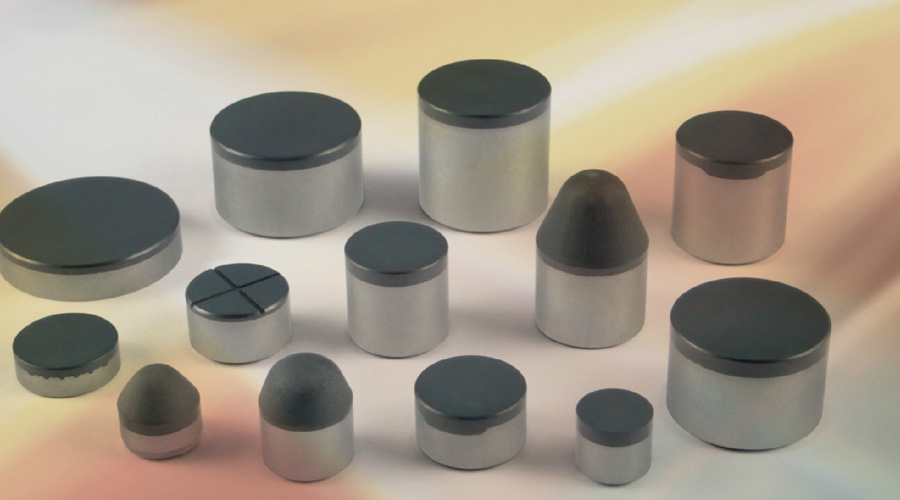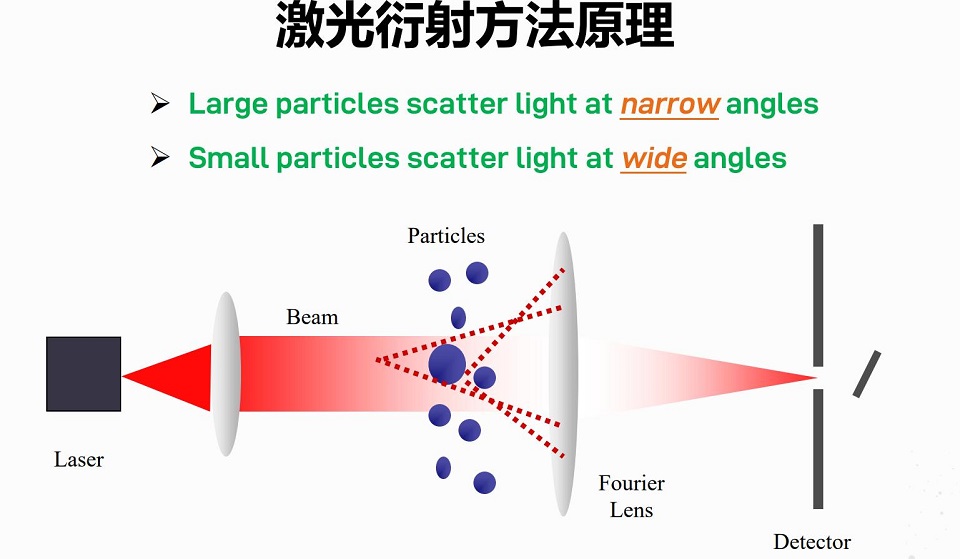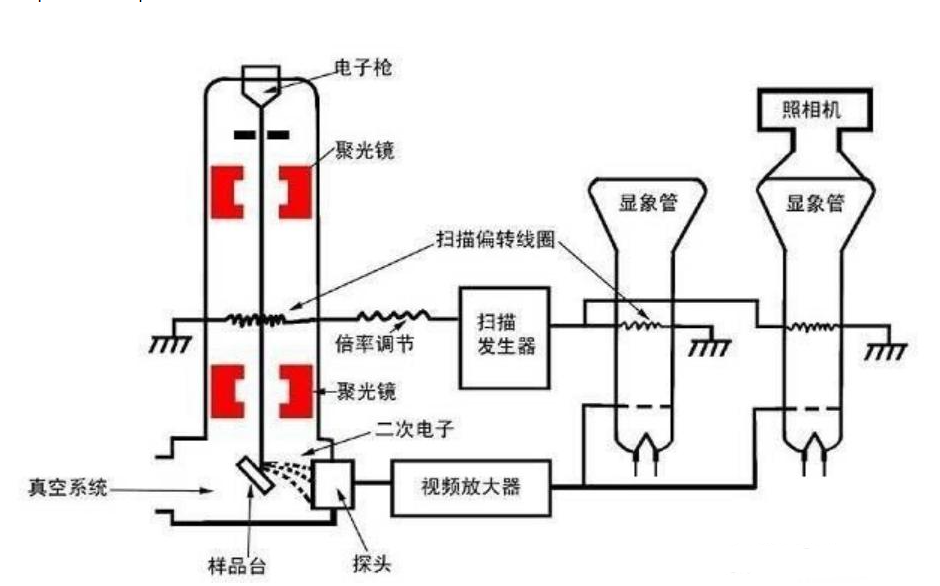Sales hotline:0519-86260808

New energy

Medicine

Semiconductor
3D printing metal powder

Abrasives and superhard materials
Electrolyte: Lithium battery electrolyte is the carrier of ion transmission in the battery. Generally composed of lithium salt and organic solvent. The electrolyte plays the role of conducting ions between the positive and negative electrodes of the lithium battery, which is the guarantee for the high voltage and high specific energy of the lithium ion battery. The electrolyte is generally prepared from high-purity organic solvents, electrolyte lithium salts, necessary additives and other raw materials under certain conditions and in a certain proportion. However, due to the configuration of the electrolyte, the mixing process is not standardized, and the quality of the filter elements on the market is uneven.
There are a lot of particles in the raw materials, and the incoming materials are not detected, etc., resulting in a lot of particles in the finished electrolyte, including deadly metal particles.
Advantages of microfluidic imager:
The electrolyte is tested in situ and in a closed pipeline, without introducing new impurities due to additional pre-treatment, and will not come into contact with water vapor in the air, causing HF volatilization and affecting the health of operators.
Information such as the concentration and particle size of particles larger than 0.2 microns can be obtained. The less the particles, the lower the probability of the filter element being blocked.
Imaging, storage, and analysis of millions of particles in a short period of time.
The AI algorithm is used to classify different types of particles, so as to distinguish transparent lithium salts, opaque metal particles with sharp angles, and filter element shedding (structure and fibers, the appearance of fibers means that the filter element has been partially damaged).
The concentration and particle size of particulate matter can be counted and analyzed, so as to facilitate the formulation of corresponding standards.
It can be transformed into an online detection solution, realize PAT process detection, and provide particle monitoring for each production process of the electrolyte, thereby providing data basis for particle processing decisions (particle detection, judgment of filter failure behavior)
Cathode material: All factors that affect the transfer of electrons and lithium ions in the material will affect the performance of the cathode material, among which the morphology of the material is the key to determine the transfer path of electrons and ions. Materials with different morphologies will exhibit different electrochemical properties, which affect the transfer paths of electrons and ions and the tap density of materials. Through the control of crystal growth, many active sites with fast conduction lithium ions are exposed. The three-dimensional spherical positive electrode material composed of nanoparticles or nano-flaky primary particles, combined with some surface modification methods, such as using fast lithium ion conductor surface coating, optimizing the contact surface between the positive electrode material and the electrolyte, can obtain commercially acceptable Application of high-performance lithium-ion battery cathode material.
Negative electrode material: The negative electrode material is a key component of lithium-ion batteries and has an important impact on the performance of lithium-ion batteries. The study found that the granulation method and morphology of the negative electrode material have a great influence on its performance. Coal-based needle coke is used as a raw material as an example. The primary particle negative electrode material is obtained through crushing and graphitization. The overall shape of the primary particle is not high in spheroidization rate and irregular in shape, resulting in small tap density and compaction density. The results showed that the first Coulombic efficiency of the primary granular anode material was 84%. Although the primary granular anode material made of needle coke has a high capacity, due to the unique streamlined fiber structure of needle coke, the degree of orientation in each direction is different. There are still some defects in the electrochemical performance, which is easy to cause battery expansion, and the rate performance is average, and the initial Coulombic efficiency is low, which will lead to a large consumption of positive electrode materials in industrial production, thereby increasing the cost. The secondary granulation of artificial graphite is beneficial to improve the performance of negative electrode materials. The secondary granulation process is to crush the aggregate to obtain a small particle base material, use pitch as a binder, and perform secondary granulation in the reactor according to the target particle size, and obtain the finished product secondary granulation after subsequent graphitization and other processes. Secondary granulation negative electrode material, the finished product after secondary granulation has good sphericity, high regularity of overall processed particles, high tap density and compaction density, and good fluidity, and because its structure is made of small particles bonded, Having more holes can enrich the number of channels for Li+ intercalation and extraction in the lattice, and further improve the rate performance and low-temperature performance of the negative electrode material. Small particles have large specific surface area, many lithium ion migration channels, short paths, and good rate performance; large particles have high compaction density and large capacity. The secondary particle anode material can take into account the advantages of large particles and small particles, and become an anode material with high capacity and good rate performance. In addition, the secondary particle anode material formed by the granulation process can increase the isotropy of the anode material and improve the first Coulombic efficiency and rate performance of the battery.
At present, we usually use a laser particle size analyzer to test the particle size of the material, and an electron microscope to observe the shape of the material. The principle of the laser particle size analyzer determines that it has certain limitations in testing synthetic materials, including a very small amount of small The test accuracy of particles and large particles, the uncertainty of optical models, and the diversity of particle shapes, etc., all these factors will lead to huge errors in the inversion process of Mie theory, which may mislead the production guidance. Recently, The newly revised GBT19077-2016 "Particle Size Analysis: Laser Diffraction Method" (ISO13320: 2009) points out that laser particle size analyzers can only be used for the detection of spherical particles. For non-spherical particles, the error is large, and the results are extremely affected by particle shape. big impact. Obviously, it is impossible to obtain accurate test values for the particles of positive and negative electrodes by using this test method.

The method of electron microscopy is suitable for the observation of the details of the surface morphology of particles. It can check the pores of the particles, the coating situation and the roughness of the surface, etc., but it cannot quantify the morphology characteristics of a large number of particles. The stacking of particles is related. After corresponding statistics on the characteristics of a large number of particles, it can play a very intuitive and effective evaluation of the particle transformation behavior in the current positive and negative materials, thereby optimizing the material research and development process and quantifying the impact of different controls on particles. Shape influence.

| Features | W-3000 | Sieving method | Laser particle size analyzer | Sedimentation method | Microscopy/Electron Microscopy |
Submicron Particle Testing | ++ | - | ++ | - | ++ |
wide range of tests | ++ | - | ++ | - | + |
Particle Imaging and Analysis | ++ | - | - | - | ++ |
Sample test volume | + | ++ | + | ++ | - |
Calibration and verification | ++ | ++ | + | - | + |
operation and maintenance | ++ | ++ | + | - | - |
Statistical function | ++ | + | + | - | ++ |
Insoluble particles in chemical drug injections may be introduced from raw materials, production process, storage and transportation, and use. Controlling the production of insoluble particles in injections is an important measure to reduce adverse reactions of infusion and ensure drug safety. By referring to domestic and foreign pharmacopoeia standards, guidelines and research literature on insoluble particles in injections, the main causes of insoluble particles were discussed, and effective control strategies and related suggestions were put forward, in order to provide corresponding reference for controlling the quality of chemical drug injections.
Injection is an important clinical dosage form commonly used in clinical practice. It refers to the raw material drug or a sterile preparation made with suitable excipients for injection into the body. It is mainly divided into injection liquid, sterile powder for injection and concentrated solution for injection. Subcutaneous injection, intradermal injection, intramuscular injection, intravenous injection, intravenous drip, intrathecal injection, intraspinal injection and other ways into the body. Classified according to the injection method, injections can be divided into intravenous injection, intramuscular injection, subcutaneous and intradermal injection, etc.; according to different dispersion systems, injections can be divided into solution type, emulsion type, suspension and powder type, etc.
The quality of injections is related to the content of active ingredients, sterility, related substances and foreign matter, etc. The strict control of these indicators is related to the safety and effectiveness of injections. Among them, the control of foreign matter is divided into two aspects: visible foreign matter and insoluble particles. Insoluble particles in injections refer to mobile insoluble particles that are not intentionally present in the solution except air bubbles. Once insoluble particles enter the body with the injection, they can flow with the blood but cannot be metabolized, which may cause difficult to detect and potentially serious harm to the human body, such as inflammatory response, vascular injury, granuloma, vascular embolism, pyrogen reaction, allergic reaction, tumor Or tumor-like reactions and other adverse reactions.
In the "National Adverse Drug Reaction Monitoring Annual Report" in 2020, adverse drug reactions/events administered by injections accounted for 56.7% of all dosage forms. Among the 18 evaluation indicators proposed in the "Basic Infusion Clinical Use Evaluation Guidelines", insoluble particles are one of the most important indicators in clinical infusion safety evaluation. At present, a variety of detection technologies for insoluble particles have been developed, such as microfluidic imaging, microscopy, light scattering, photoresistance, and electrical resistance. From the richness of functions, the convenience of operation, and the traceability of particles Look, the microfluidic imager has obvious advantages, the specific advantages and comparison are as follows:
| Features | microfluidic imaging | Photoresist method | Resistance method | Microscopic observation |
Submicron Particle Testing | ++ | - | + | + |
wide range of tests | ++ | - | - | + |
Accurate measurement of fluid | ++ | ++ | + | + |
Particle Imaging and Analysis | ++ | - | - | ++ |
Sample test volume | ++ | ++ | + | - |
Calibration and verification | ++ | ++ | + | + |
operation and maintenance | ++ | ++ | + | - |
Statistical function | ++ | + | + | - |
A semiconductor wafer is a semiconductor component commonly used in electronic circuits. After polycrystalline silicon is doped to make single crystal silicon, silicon ingots are generated, and the silicon ingots are accurately cut with a diamond saw. The wafer is then ground, thinned, etched, cleaned, chamfered, polished and other steps to obtain a finished semiconductor wafer. When the wafer is in use, its polished surface needs to be used to produce circuits, so the polished surface needs to be free from any bumps, micro-grains, scratches and residual damage. Usually, it is cleaned and inspected after polishing to ensure that the polished surface is smooth and free of defects put into use later.
The initial polishing of semiconductor substrates (substrate wafers) followed the use of mechanical polishing, such as magnesium oxide, zirconium oxide polishing, etc., but the resulting damage to the wafer surface was extremely serious. Until the end of the 1960s, a new polishing technology - chemical mechanical polishing technology (CMP Chemical Mechanical Polishing) replaced the old method. CMP technology combines the advantages of chemical and mechanical polishing:
Pure chemical polishing has a fast polishing rate, high surface finish, low damage, and good perfection, but the surface flatness and parallelism are poor, and the surface consistency after polishing is poor; pure mechanical polishing has good surface consistency and high surface flatness. However, the surface finish is poor and the damage layer is deep. Chemical mechanical polishing can obtain a more perfect surface and a higher polishing rate, and the obtained flatness is two orders of magnitude higher than other methods. It is currently the only effective method to achieve global planarization. Research on the mechanism, kinetic control process and influencing factors of silicon single wafer chemical mechanical polishing (CMP) based on mechanical processing principles, semiconductor material engineering, physical chemistry multiphase reaction multiphase catalysis theory, surface engineering, semiconductor chemistry basic theory, etc. It indicates that chemical mechanical polishing is a complex heterogeneous reaction, and there are two kinetic processes in it:
Polishing first makes the oxidant, catalyst, etc. in the polishing liquid adsorbed on the polishing cloth and the silicon atoms on the surface of the substrate undergo a kinetic process of redox on the surface. This is the body of the chemical reaction.
Polished surface reactants detach from the surface of silicon single crystal, that is, the kinetic process of desorption process to re-expose unreacted silicon single crystal. It is another important process that controls the polishing rate. The chemical mechanical polishing process of silicon wafers is a mechanical polishing process based on chemical reactions. To obtain high-quality polished wafers, a balance must be achieved between chemical corrosion and mechanical grinding during the polishing process. If the chemical corrosion effect is greater than the mechanical polishing effect, corrosion pits and orange peel-like ripples will appear on the surface of the polishing sheet. If the mechanical grinding action is greater than the chemical etching action, a highly damaged layer develops on the surface.
If there is a problem with the polishing fluid, such as particle aggregation or the presence of original large particles, there will be a scratch effect locally, resulting in the scrapping of the chip as a whole.
In summary, the detection of large particles in the polishing liquid is the focus of production monitoring. The microfluidic imager can image the large particles in the polishing liquid, thereby eliminating the influence of air bubbles, better identifying aggregates, and the presence of primary large particles. Significance.
Spherical metal powder is the core material of metal 3D printing and the most important link in the 3D printing industry chain, which is closely related to the development of 3D printing technology. In the "2013 World 3D Printing Technology Industry Conference", authoritative experts gave a clear definition of the performance requirements of 3D printing metal powder, that is, metal powder with a size of less than 1mm. In addition, the metal is required to meet high purity, good sphericity, Narrow particle size distribution, low oxygen content, good fluidity and other requirements. The ASTM F3049-14 standard promulgated in June 2014 specifies the scope and characterization methods of 3D printing metal powder properties. At present, metal powder materials for 3D printing are mainly concentrated in iron, titanium, cobalt, copper, nickel and other metals and their alloys.
With the rapid development of metal 3D printing technology, the market of spherical metal powder will maintain a high growth trend. In 2016, the market size of 3D printing metal powder was about 250 million US dollars. According to authoritative media, by 2025, the market size of 3D printing metal powder will reach 5 billion US dollars. However, at present, the spherical metal powder for 3D printing is mainly monopolized by foreign manufacturers, and the domestically produced spherical powder has problems such as unstable performance, high cost, and low yield. Therefore, it is particularly important to study the preparation of 3D printing metal powders.
At present, there are two methods to produce and prepare spherical metal powders, including argon atomization method and plasma rotating electrode method. The argon atomization method uses a fast-flowing argon flow to impact the metal liquid, breaking it into fine particles, and then condensing The powder making method of solid powder; plasma rotating electrode method, the plasma state is called the fourth state of matter, and the powder making process of plasma rotating electrode atomization (PREP method) can be simply described as: making metal or alloy into self-consumption electricity The end of the consumable electrode is melted under the action of the coaxial plasma arc heating source to form a liquid film, and the liquid film is thrown out at high speed under the action of rotating centrifugal force to form droplets. The molten droplets and the inert gas in the atomization chamber (argon gas or helium) friction, further crushing under the action of shear stress, and then the molten droplets are rapidly cooled and solidified into spherical powder under the action of surface tension.
3D printing requirements for metal powder
1. Purity
Ceramic inclusions will significantly reduce the performance of the final product, and these inclusions generally have a high melting point and are difficult to sinter into shape, so there must be no ceramic inclusions in the powder.
In addition, oxygen and nitrogen content also need to be strictly controlled. At present, the powder preparation technology for metal 3D printing is mainly based on the atomization method. The powder has a large specific surface area and is easy to oxidize. In special application fields such as aerospace, customers have stricter requirements for this index, such as superalloy powder The oxygen content is 0.006%-0.018%, the oxygen content of titanium alloy powder is 0.007%-0.013%, and the oxygen content of stainless steel powder is 0.010%-0.025%.
2. Powder fluidity and bulk density
Powder fluidity directly affects the uniformity of powder spreading and the stability of powder feeding process during printing.
Fluidity is related to powder morphology, particle size distribution and bulk density. The larger the powder particles, the more regular the particle shape, and the smaller the proportion of very fine powder in the particle size composition, the better the fluidity; the particle density remains unchanged. As the relative density increases, the powder fluidity increases. In addition, the adsorption of water, gas, etc. on the surface of the particles will reduce the fluidity of the powder.
3. Powder particle size distribution
Different 3D printing equipment and forming processes have different requirements for powder particle size distribution. At present, the commonly used powder particle size ranges for metal 3D printing are 15-53 μm (fine powder) and 53-105 μm (coarse powder).
4. Powder morphology
The powder morphology is closely related to the powder preparation method. Generally, when the metal gas or molten liquid is transformed into a powder, the shape of the powder particles tends to be spherical; when it is transformed from a solid state into a powder, the powder particles are mostly irregular shapes, and most of the powders prepared by aqueous solution electrolysis are dendritic, generally and In other words, the higher the sphericity, the better the fluidity of the powder particles. 3D printing metal powder requires a sphericity of more than 98%, so that it is easier to spread and feed powder during printing.
In summary, the static image method can test metal powder in two dimensions of particle size and particle shape, and obtain up to dozens of parameters, which can perfectly characterize the three-level morphology characteristics including macroscopic, mesoscopic, and microscopic. Therefore, the evaluation includes the overall aspect ratio, roundness, sphericity and satelliteization information of the particles, and can compare the fluidity of different batches of powder and the adhesion of particles, and can conduct indirect quantitative analysis.
Abrasives refer to the general term for hard materials that play a cutting role in the grinding process, and are mainly used to manufacture abrasive tools; abrasives are sharp and hard materials used to grind softer material surfaces. Abrasives include natural abrasives and artificial There are two categories of abrasives.
There are also types of artificial abrasives. There are mainly two types of corundum abrasives and carbonized abrasives. Different types of abrasives have different characteristics and application fields:
Brown corundum abrasive, the main component is Al2O3, has medium hardness, high toughness, sharp particles, relatively low price, and is suitable for processing metals with high tensile strength. Both microcrystalline corundum abrasive and black corundum abrasive are its derivatives.
The hardness of white corundum abrasive is slightly higher than that of brown corundum, but its toughness is poor, and it is easy to cut into the workpiece during grinding. It has good self-sharpness, low calorific value, strong grinding ability and high efficiency. Chrome corundum abrasive is a derivative of it.
Single crystal corundum abrasive, its particles are composed of a single crystal, and has a good multi-edge cutting edge, high hardness and toughness, strong grinding ability, and low grinding calorific value. The disadvantage is that the production cost is high and the output is low. , so the price is relatively high. Zirconium corundum abrasive is also a crystalline compound with slightly lower hardness and better wear resistance than crystal size.
Black silicon carbide abrasives, green silicon carbide abrasives, cubic silicon carbide abrasives, cerium silicon carbide abrasives, etc., belong to silicon carbide abrasives, the main component is silicon carbide SiC, high hardness, high brittleness, sharp abrasive grains, good thermal conductivity and wear resistance Strong resistance, more suitable for processing hard and brittle metal and non-metal products.
Sharpness is an important shape feature of abrasives. The traditional image method to evaluate the roundness or sphericity of abrasives is based on the parameters of particle length, short diameter or circumference. The basic parameters of this type are all integral indicators, which cannot evaluate the local characteristics of particles. Our company has a unique bluntness index, which can characterize particles with acute angles, which is a great advancement of vision technology in the characterization of abrasive particles.

Innovative particle characterization creates infinite possibilities

Pay attention to M.I.P
